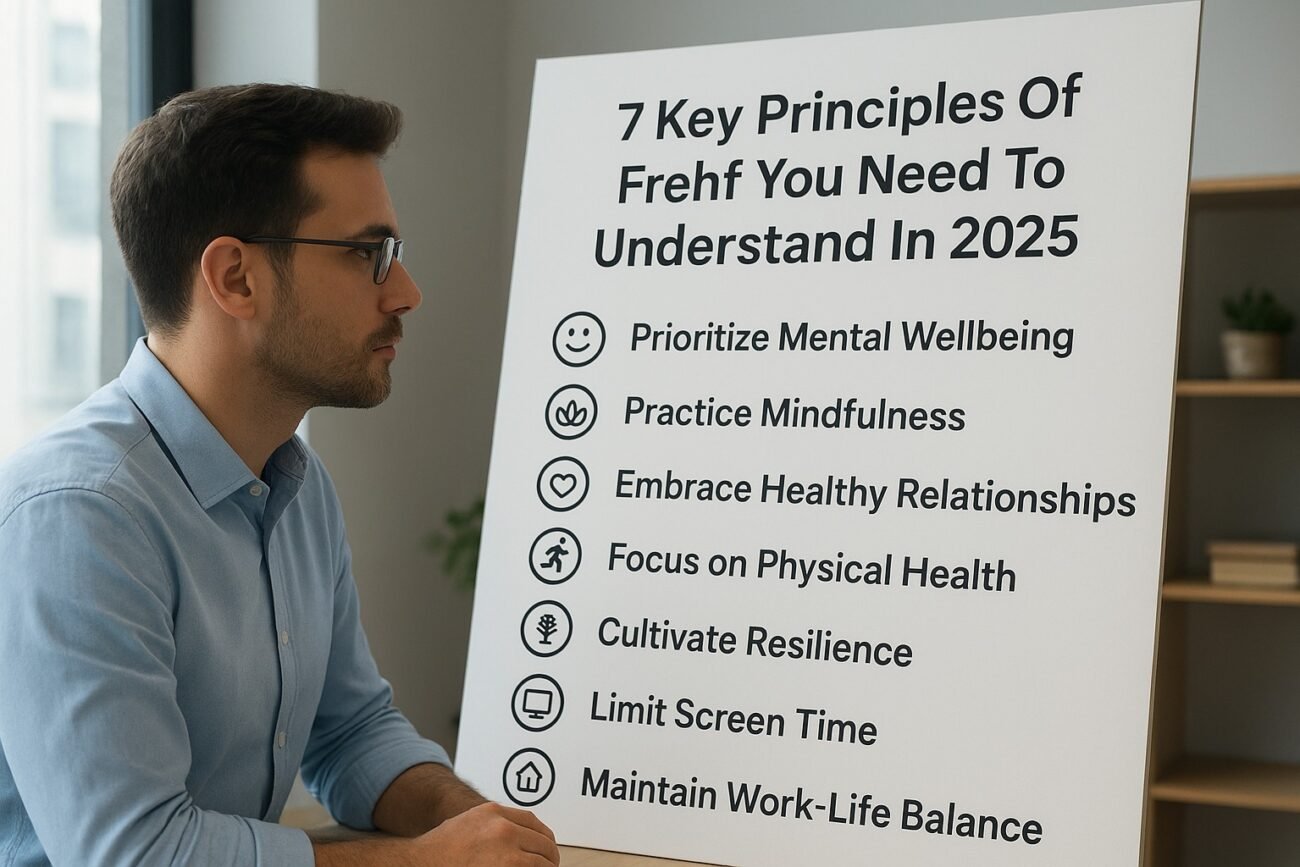Technology is advancing at a pace that often feels overwhelming. Interfaces, apps, and tools shape our daily lives—but they are not always designed with people’s emotions or needs in mind. This is where frehf, short for Future-Ready Enhanced Human Framework, comes in. Frehf is an emerging approach that focuses on making technology more human-friendly, adaptive, and responsive. Instead of asking people to adjust to machines, frehf suggests that machines should adjust to people.
In this article, we’ll explore what frehf means, how it works, why it matters, and what challenges it faces.
What Is Frehf?
Frehf stands for Future-Ready Enhanced Human Framework. It is a design philosophy that combines insights from artificial intelligence, neuroscience, psychology, and user-experience design. Its purpose is to create systems that sense, interpret, and respond to human states—including emotions, stress, attention, and comfort.
Think of frehf as the next stage of human-computer interaction: a step beyond personalization, where technology adapts moment by moment to people’s real conditions.
How Frehf Works
The frehf framework is often described in terms of layers:
- Sensory Input: Collects signals like voice tone, facial expression, body movement, or biometric data.
- Perception Analysis: Interprets these signals to detect emotions, stress, or focus.
- Adaptive Interfaces: Adjusts the layout, complexity, or style of the system to match the user’s needs.
- Knowledge Core: Uses AI and machine learning models to predict patterns and anticipate support.
- Feedback Engine: Responds with changes—such as easier instructions, calming notifications, or adapted pacing.
Why Frehf Matters
- Reduces Digital Overload
People today spend long hours on screens, often experiencing fatigue and stress. Frehf aims to reduce cognitive overload by making digital systems more considerate. - Improves Accessibility
For people with learning differences, disabilities, or unique communication styles, adaptive interfaces can create fairer access. - Supports Emotional Well-being
By recognizing stress or frustration, frehf-based systems can adjust in ways that help users feel calmer and more supported. - Bridges Human and Machine Thinking
Instead of rigid commands, frehf moves toward collaboration—machines and humans working in smoother partnership.
Real-world Applications Of Frehf
- Healthcare – Virtual consultations that sense patient stress and adjust communication.
- Education – Online classes that slow down or provide examples when a learner struggles.
- Workplaces – Remote work tools that detect overload and suggest breaks.
- Military and Aerospace – Systems that manage information flow under pressure.
- Entertainment – Games that adapt difficulty based on player frustration or excitement.
Ethical Challenges Of Frehf
While the benefits are promising, frehf also raises serious questions:
- Privacy: Collecting biometric and emotional data must come with strong protections.
- Bias: Systems could misinterpret signals differently across cultures or individuals.
- Consent: Users should always know when and how data is being collected.
- Transparency: Clear explanations are needed to maintain trust.
Responsible use of frehf means balancing innovation with respect for human dignity and rights.
The Future Of Frehf
Over the next decade, frehf could reshape how we interact with technology. Smart cities, personalized healthcare, adaptive learning, and emotionally aware customer service are all possibilities. Yet its success will depend on ethical design, trustworthy systems, and clear standards.
If done right, frehf may not just improve technology but change how we live and work with it—creating digital environments that feel more natural, humane, and supportive.
Conclusion
Frehf, the Future-Ready Enhanced Human Framework, represents a new way of thinking about technology. Instead of focusing only on efficiency or speed, it emphasizes human experience. By adapting to emotions, needs, and context, frehf has the potential to make technology more inclusive, less stressful, and far more effective.
As with all innovations, its path forward depends on balancing promise with responsibility. But one thing is clear: frehf points to a future where machines serve people—not the other way around.
FAQ’s:
What Does Frehf Stand For?
Frehf stands for Future-Ready Enhanced Human Framework. It is a concept in technology design that focuses on creating systems that adapt to human emotions, needs, and cognitive states in real time.
How Is Frehf Different From Regular AI Or Personalization?
Traditional AI personalization mostly uses past data—like your browsing or purchase history—to make predictions. Frehf, on the other hand, is dynamic. It responds to live signals such as stress, focus, or mood, adjusting the interface or response instantly.
Where Can Frehf Be Applied In Real Life?
Frehf can be useful in many fields:
- Healthcare, where telemedicine platforms sense patient comfort.
- Education, where digital lessons adapt pace to student attention.
- Work tools that reduce overload by adjusting task flows.
- Gaming and entertainment that respond to player emotions.
Is Frehf Safe To Use?
Frehf has great potential, but it raises important privacy and ethics concerns. Any system using frehf principles should protect user data, avoid bias, and ensure clear consent. Responsible design is key to making it safe.
What Challenges Does Frehf Face?
The biggest challenges include:
- Accurate detection of emotions across cultures.
- Avoiding misuse of sensitive biometric data.
- Building trust through transparency.
- Developing universal standards so frehf is fair and reliable.
What Is The Future Of Frehf?
In the coming years, frehf may play a role in smart cities, adaptive learning, digital healthcare, and emotionally intelligent customer service. Its success will depend on how responsibly it is designed and regulated.
Hungry for more? Head over to my website for fresh articles.
